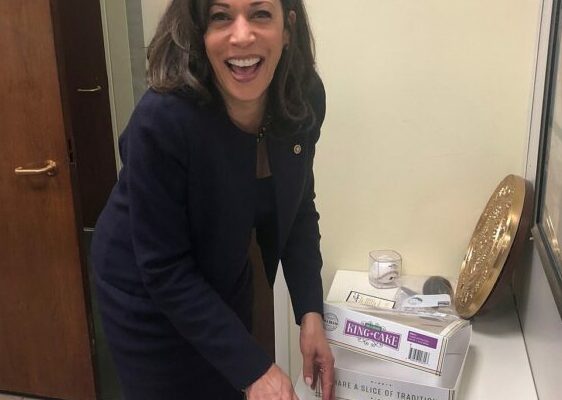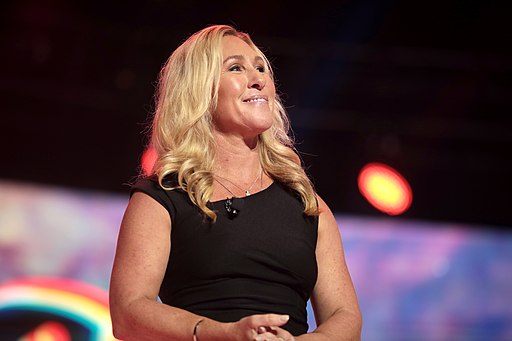
Kamala Harris has soared up the polls over the past month as Democrats, overjoyed that their aged and addled president was no longer at the top of the ticket, came back to the fold. During her first six weeks the vice president has spent most of her time running what’s been called a “vibes” campaign—she should be president because of how she makes you feel, not because of what she plans to do.
That strategy has so far worked because although she’s the number two person leading the government, she has so far refused to do any interviews.
Now we’re seeing why. When she talks about anything specific, she comes in between incomprehensible and insane.
On Friday Kamala Harris laid out an economic plan so radical that it is closer to something Hugo Chavez would promote than Bill Clinton. Pushing price controls on groceries—a Chavismo favorite—and offering $25,000 for housing, Democrats appear to want to do one of the big mistakes in economics: subsidize demand rather than promote growth.
Her plan for the economy is so bad that even The Washington Post, which supports Harris and loathes Donald Trump, attacked it as a “gimmick” during a time in where serious ideas are needed.
Americans are clearly still anxious and angry about the high cost of groceries, housing and even $5.29 Big Macs. While the inflation rate has cooled substantially since the 2022 peak, an ostensible Biden-Harris administration accomplishment, prices remain elevated relative to the Trump years. So it’s a real political issue for Ms. Harris. One way to handle it might be to level with voters, telling them that inflation spiked in 2021 mainly because the pandemic snarled supply chains, and that the Federal Reserve’s policies, which the Biden-Harris administration supported, are working to slow it. The vice president instead opted for a less forthright route: Blaming big business. She vowed to go after “price gouging” by grocery stores, landlords, pharmaceutical companies and other supposed corporate perpetrators by having the Federal Trade Commission enforce a vaguely defined “federal ban on price gouging.”
Never mind that many stores are currently slashing prices in response to renewed consumer bargain hunting. Ms. Harris says she’ll target companies that make “excessive” profits, whatever that means. (It’s hard to see how groceries, a notoriously low-margin business, would qualify.) Thankfully, this gambit by Ms. Harris has been met with almost instant skepticism, with many critics citing President Richard M. Nixon’s failed price controls from the 1970s. Whether the Harris proposal wins over voters remains to be seen, but if sound economic analysis still matters, it won’t.
Ms. Harris’s housing plan is built on a slightly firmer foundation. In urging construction of 3 million new homes over the next four years, she puts her finger on the essence of the housing-affordability problem: insufficient supply. She offers clever tax incentives to help make it happen. But her proposed $25,000 in down payment assistance for first-time home buyers stimulates the demand side, which risks putting upward pressure on prices. Such a measure might make sense if Ms. Harris paid for it by eliminating other demand-side housing subsidies, such as the mortgage interest deduction, a roughly $30 billion annual drain on federal revenue that benefits many wealthy Americans — but she does not.
Ms. Harris is on firmest ground when she advocates increasing the child tax credit from the current level of $2,000 per kid up to $3,600 per kid for middle-class and low-income families, and for making it easier for those lower on the income scale to access the benefit. These levels were in place in 2021 and resulted in many families being lifted above the poverty line. Assuming it’s designed with appropriate work incentives, the child tax credit can be highly effective anti-poverty policy. Ms. Harris also suggested expanding the earned income tax credit for childless low-income “front-line workers,” a smart idea that has enjoyed bipartisan support in Congress. She would extend beyond 2025 tax breaks to help Americans of modest means afford to buy health insurance on the Affordable Care Act marketplaces; those tax breaks are part of the reason more than 92 percent of Americans have health insurance now. She also wants to expand the government’s limited power to negotiate Medicare drug prices and permanently cap out-of-pocket drug spending at $2,000 per year for everyone.
The policy that WaPo claims as her best is actually another case of Harris simply copying an idea from the Trump campaign, as she did with no longer taxing tips.
Kamala Harris copied President Trump on No Tax On Tips.
Now she is copying JD Vance on a child tax credit: pic.twitter.com/MR7bGKENtm
— Steve Guest (@SteveGuest) August 16, 2024
In July, ABC News reported that “as former President Donald Trump’s new running mate, JD Vance, faces renewed scrutiny over his previous comments criticizing childless individuals, an unearthed 2021 interview shows the Ohio senator advocating for higher taxes on Americans without children.
The comments came in a 2021 episode of The Charlie Kirk Show podcast, where Kirk, the CEO of the conservative student organization Turning Point USA, was discussing how Republicans could shift public perception of certain conservative ideas from “unthinkable” to accepted policy.
‘So JD … what are you going to do to change this conversation? Everything we have to do should be about moving ideas from unthinkable, to sensible, to popular, to policy,’ said Kirk, according to a video of the interview obtained by ABC News.
‘So, you talk about tax policy, let’s tax the things that are bad and not tax the things that are good,’ Vance said in the interview, which is no longer public on Kirk’s channel. ‘If you are making $100,000, $400,000 a year and you’ve got three kids, you should pay a different, lower tax rate than if you are making the same amount of money and you don’t have any kids. It’s that simple.'”
What was “controversial” for liberals in July is now their standard-bearer’s policy to help families.
[Read More: Trump Announces His Next Step]











